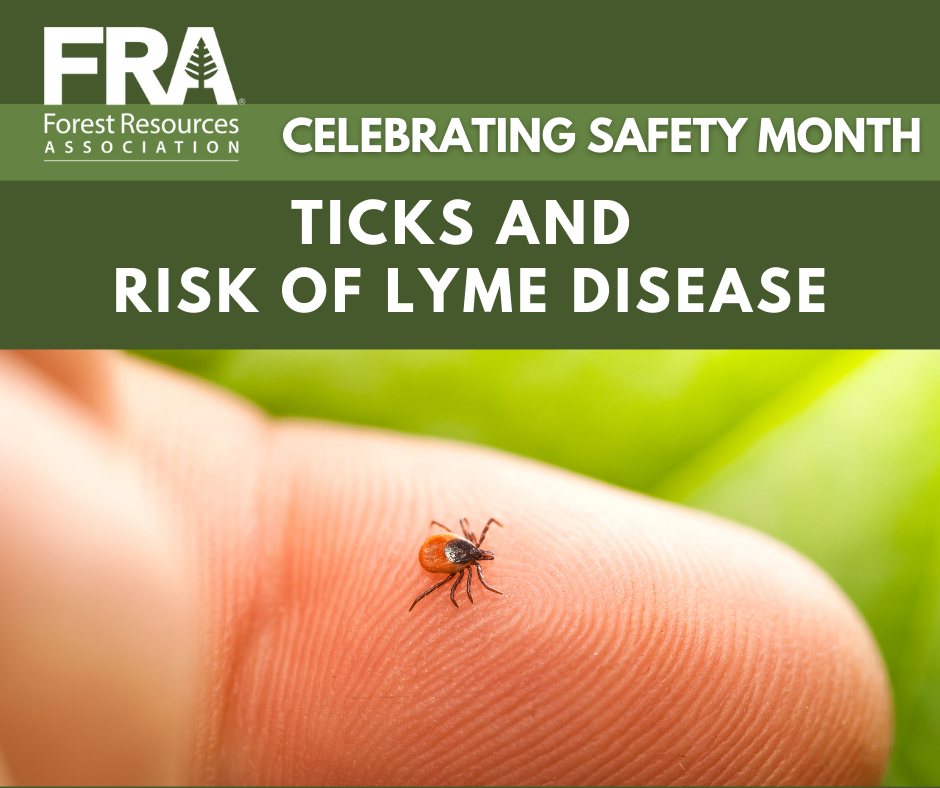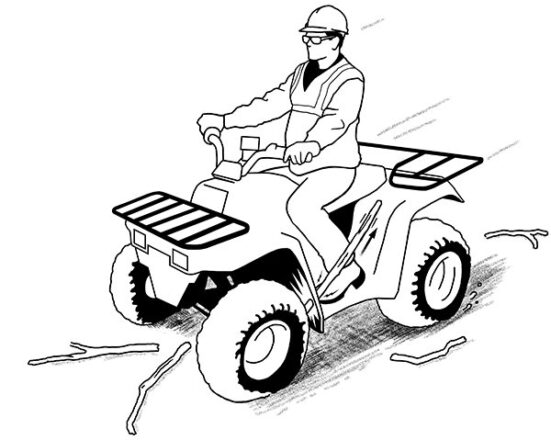Ticks and Risk of Lyme Disease

As we continue through National Safety Month, a good reminder on how to prevent tick bites is in order. This safety bulletin was originally published by BC Forest Safety. The same recommendations apply throughout North America.
Top Tick Facts
- Ticks are usually found in long grass and wooded or overgrown areas.
- Tick season runs from April to October, and peaks from June to August.
- Some ticks are known to be infected with the bacterium that causes Lyme disease.
The Best Offense is a Good Defence to Prevent Tick Bites
- Wear long‐sleeved shirts and long pants in light colors whenever possible. Light colors help you to see ticks that may be on your clothes, while long pants and sleeves give less exposed skin for ticks to bite. Tucking your pants into your socks also keeps ticks from crawling underneath them.
- Use an insect repellent containing DEET or Icaridin on all exposed skin. If you experience skin irritation using a product containing DEET, choose one containing Icaridin/Picaridin, a new active ingredient that is easier on the skin.
- Do a tick check after every day spent in a tick’s habitat. Undress fully and examine every inch of your body for ticks, bearing in mind that they are very small and hard to see. Pay special attention to creases (insides of elbows, knees, groin, etc.) and hairy areas, and use another person or a mirror to check areas you can’t easily see.
- Watch out for hangers‐on! Ticks can catch a ride into your house on your clothes, your gear, and your pets and then bite you later, so make sure you check everything thoroughly after spending time in a tick’s habitat. Don’t trust your washing machine – just washing your clothes, even in hot water, may not kill ticks. They will need at least 20 minutes on the hot dryer cycle as well to be safe.
Tick Tock!
If you are bitten, quick removal is very important. Removing the tick within 24‐36 hours of the bite usually prevents any infection. It is safe to remove ticks at home with the right technique, but don’t be afraid to see a doctor to have the tick removed if it’s in a place you can’t easily reach or see, you can’t see the mouth parts, you can’t get a good grip without squeezing the tick or if it doesn’t detach easily.
To safely remove a tick:
- You will need fine‐tipped tweezers (available at any drug store), rubbing alcohol or swabs, and a crush‐proof plastic container such as an old pill bottle.
- Expose the site of the tick bite, being careful not to touch the tick with bare fingers.
- Wipe the tips of your tweezers with rubbing alcohol to sterilize them.
- Gently get a hold of the tick with the tweezers as close to the mouth as possible (below the swollen body). Don’t squeeze any harder than you need to in order to get a good grip.
- Steadily lift the tick straight off your skin. Do not jerk or twist the tick as this may cause the head to be left behind. Be careful not to squeeze the swollen body of the tick, as this will cause the contents of the tick’s stomach to regurgitate into the bite and increase your chance of infection.
- Once the tick has detached, immediately drop it into your crush‐proof container and close the lid. Check the bite to make sure there were no mouth parts left behind – if you see any, gently pull them out with the tweezers. Clean the bite, your tweezers, and your hands with rubbing alcohol or soap and hot water. You can use an antibiotic cream (e.g., Polysporin) on the bite if you wish.
- Note the date, time, where the tick bit you, and where you were that day. If you were in a known Lyme disease risk area, you may want to drop a piece of damp paper towel into the container to help keep the tick alive and take it to your doctor as soon as possible to be submitted for testing. Otherwise, keep the tick in the fridge for a few weeks in case you experience symptoms.
UNDER NO CIRCUMSTANCES should you attempt to freeze the tick, scrape it off of your skin, put any kind of substance on it or hold a match to it. These techniques do not work reliably and may increase your risk of being infected!
The Low‐Down on Lyme Disease
Not all ticks carry the bacterium that causes Lyme disease, and transmission, when bitten, is not guaranteed. However, Lyme disease is a very serious illness, so it is worth practicing extreme caution when you are out in the bush in an area where infected ticks have been found. There is no vaccine or preventative measure available other than not being bitten.
Symptoms to watch out for after a bite include but are not limited to:
- Fever
- Headache
- Fatigue
- Muscle or joint pain
- Skin rash anywhere on your body, especially in a “bulls-eye” pattern.
If you experience any of these symptoms in the days or weeks after your tick bite, see your doctor as soon as possible and take the tick with you for analysis. Seeing the doctor early on and providing as much information as you can is critical, as early diagnosis and treatment help to prevent serious complications of Lyme disease.
Information courtesy of Health Canada, HealthLink BC, WorkSafeBC, US Centre for Disease Control and Prevention, and BC Centre of Disease Control (BCCDC). Thanks to Arielle Roberts, BSc for creating this alert (originally posted in June 2016).


